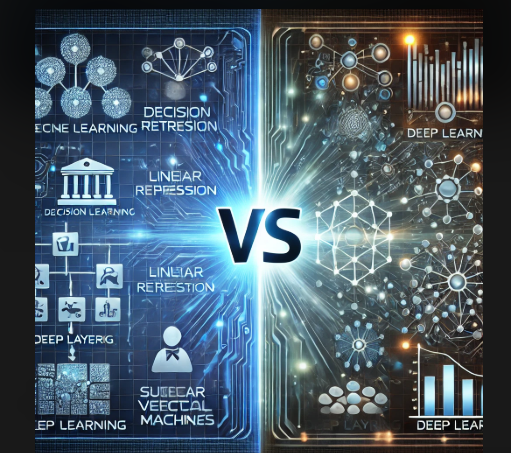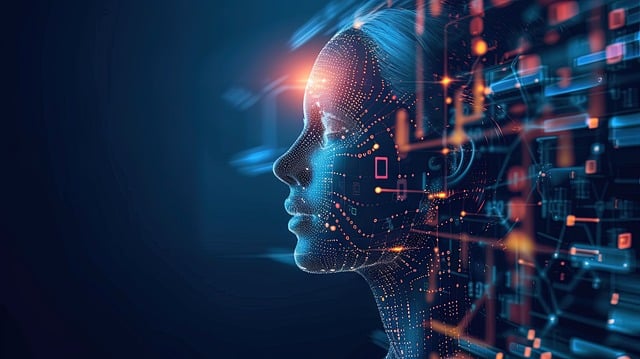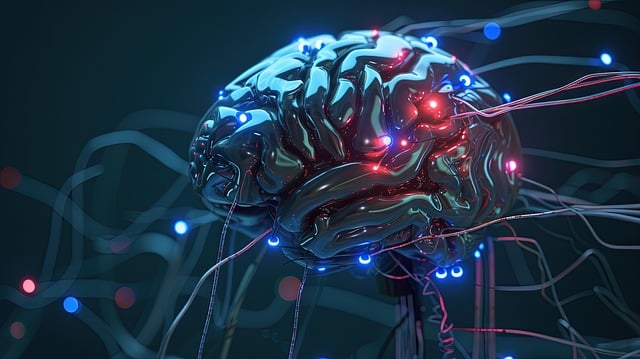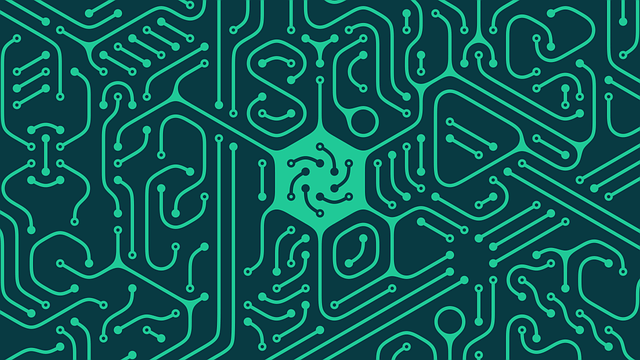In the ever-evolving world of artificial intelligence (AI), two terms that often come up are “deep learning” and “traditional machine learning.” While both are subsets of AI and aim to enable machines to learn from data, they differ significantly in their approaches, capabilities, and applications. Understanding these differences is crucial for anyone looking to leverage AI for business, research, or innovation. In this blog post, we’ll explore how deep learning differs from traditional machine learning, highlighting their unique characteristics and use cases.
Understanding the Core Differences
Before diving into the specifics, it’s important to recognize that both deep learning and traditional machine learning are designed to solve problems by learning patterns from data. However, the way they process and interpret this data sets them apart. Traditional machine learning relies on structured data and human-engineered features, while deep learning automates feature extraction, making it more suitable for unstructured data like images, audio, and text.
Feature Engineering: Manual vs. Automated
In traditional machine learning, feature engineering is a critical step. This process involves selecting and transforming raw data into meaningful features that the algorithm can use to make predictions. For example, if you’re building a model to predict house prices, you might manually create features like the number of bedrooms, square footage, or location. This requires domain expertise and can be time-consuming.
Deep learning, on the other hand, automates feature extraction. Neural networks, which are the backbone of deep learning, can learn hierarchical representations of data. For instance, in image recognition, a deep learning model can automatically detect edges, shapes, and textures without human intervention. This automation reduces the need for domain expertise and allows deep learning models to handle more complex and unstructured data.
Scalability and Performance
Traditional machine learning models often struggle with scalability, especially when dealing with large datasets or high-dimensional data. Algorithms like decision trees, support vector machines, and linear regression are effective for smaller datasets but may not perform well as the data grows in size or complexity.
Deep learning models, particularly deep neural networks, excel in scalability. They are designed to handle massive amounts of data and can improve their performance as more data is fed into the system. This makes deep learning ideal for applications like natural language processing (NLP), computer vision, and speech recognition, where the datasets are often vast and complex.
Interpretability vs. Complexity
One of the key advantages of traditional machine learning is its interpretability. Models like linear regression or decision trees provide clear insights into how decisions are made. For example, you can easily trace the factors influencing a prediction in a decision tree model. This transparency is valuable in industries like healthcare or finance, where understanding the reasoning behind a decision is crucial.
Deep learning models, however, are often referred to as “black boxes” due to their complexity. The multiple layers in a neural network make it difficult to interpret how the model arrives at a specific decision. While this complexity allows deep learning to solve more intricate problems, it can be a drawback in scenarios where interpretability is essential.
Computational Requirements
Traditional machine learning algorithms are generally less computationally intensive. They can run on standard hardware and don’t require significant resources to train or deploy. This makes them accessible for small businesses or projects with limited budgets.
Deep learning, in contrast, demands substantial computational power. Training deep neural networks often requires specialized hardware like GPUs or TPUs, which can be expensive. Additionally, the training process can take hours, days, or even weeks, depending on the complexity of the model and the size of the dataset. This high computational cost is one of the reasons why deep learning is often reserved for large-scale applications.
Use Cases and Applications
Traditional machine learning is widely used in applications where the data is structured and the problem is well-defined. Examples include fraud detection, customer segmentation, and predictive maintenance. These tasks often involve tabular data, where traditional algorithms can deliver accurate and interpretable results.
Deep learning, however, shines in areas involving unstructured data. It has revolutionized fields like computer vision, enabling advancements in facial recognition, autonomous vehicles, and medical imaging. In NLP, deep learning powers chatbots, language translation, and sentiment analysis. Its ability to process and learn from unstructured data makes it a game-changer in industries like healthcare, entertainment, and retail.
Conclusion
In summary, deep learning and traditional machine learning each have their strengths and weaknesses. Traditional machine learning is ideal for structured data and scenarios where interpretability is key, while deep learning excels in handling unstructured data and complex problems. Choosing between the two depends on the specific requirements of your project, the nature of your data, and the resources at your disposal. As AI continues to evolve, understanding these differences will help you make informed decisions and harness the full potential of machine learning technologies.






